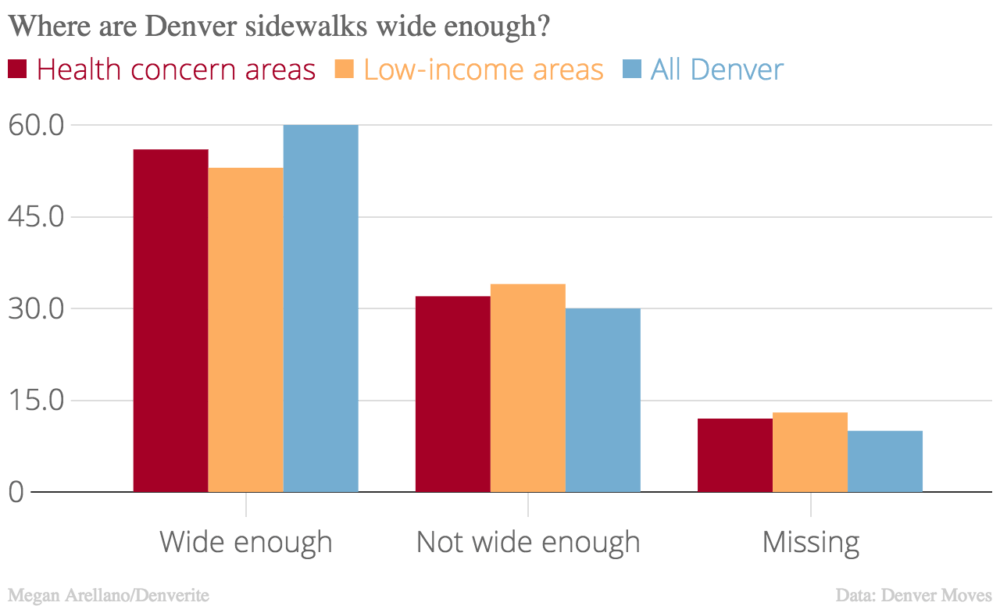
Areas of the city with the highest levels of childhood obesity tend to have sidewalks in worse conditions than the rest of the city, according to a new report from the Denver Moves.
Places with the highest rates of childhood obesity, representing about 40 percent of the city, were considered "areas of health concern." Collectively, these were places where 31 percent or more of people under the age of 21 have a BMI considered overweight or obese.
In these areas of health concern, a smaller share of sidewalks were wide enough and more sidewalks were missing than in the rest of the city. As you can see, it's not a drastic departure, but still notable:

A sufficiently wide sidewalk, by the way, is one that's four feet wide according to Americans with Disabilities Act design guidance, the report notes.
"Sidewalks of deficient width are located in the southeastern part of the City," the report said. "Missing sidewalks are primarily in the northern neighborhoods and along I-25 and Santa Fe Drive."
Health concern areas weren't the only places with worse sidewalks than the rest of the city. Low-income areas also had worse sidewalks than the city average.
Actually, low-income areas fared a bit worse. Since homeowners and businesses are supposed pay for repairs to the sidewalks near their property, plus the fact that sidewalks can be very expensive, it's not surprising that conditions are worse.

The news wasn't all bad though -- near key destinations like schools, grocery stores and transit stops, the sidewalks scored better than the rest of the city.
Likewise, sidewalks in areas with a high rate of bicycle and pedestrian injuries and fatalities scored better than average. Put another way, you'd want more and better sidewalks in areas where people are getting hurt, and that appears to be what's happening.
But the scores plummet when you consider Denver's own city sidewalk design standards. These standards incorporate a greater standard width and suggested buffer width. (Remember this legal sidewalk that didn't look quite right? It was wide enough, but perhaps lacked enough of a buffer zone.)
Anyway, only 5 percent of all the city's sidewalks met this standard, according to the report. In arterial streets, which carry the heaviest traffic in the city, it was even worse: 2 percent met the standard.
The whole report is worth a read and you can check it all out here.













